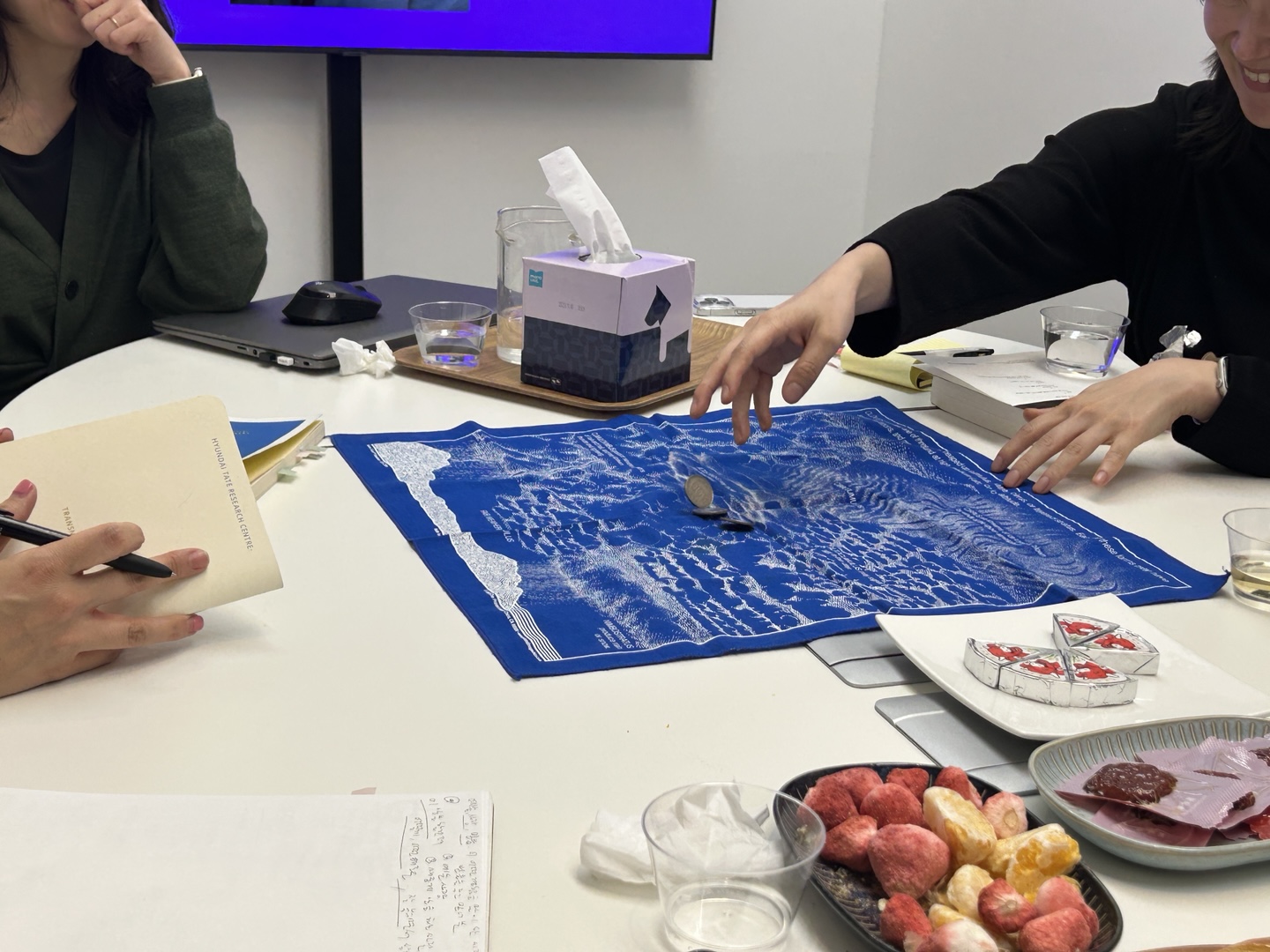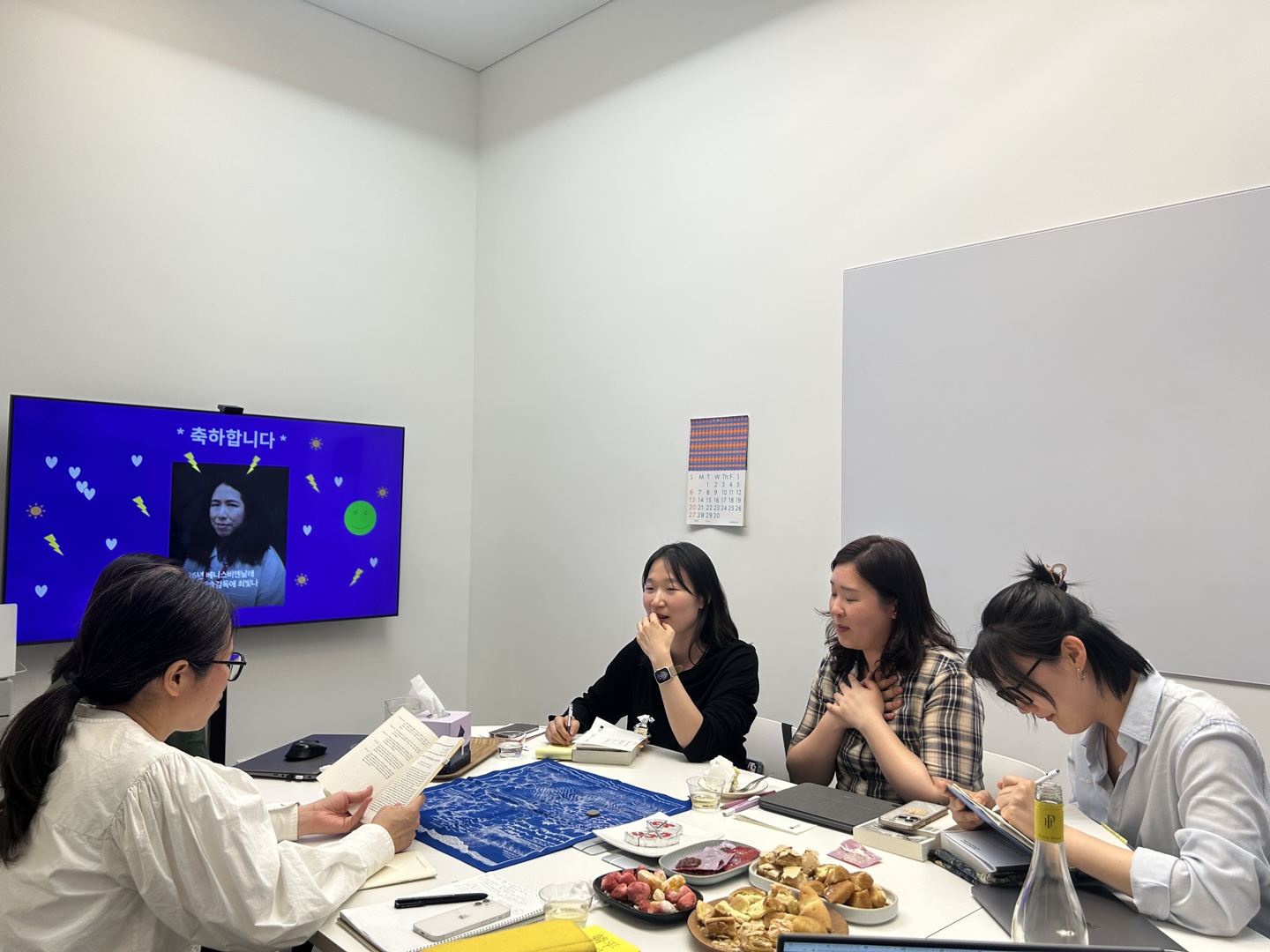Seminar Ⅲ - Binna Choi
I was really struck by the things that came up as the three of us spoke on Zoom after reading this text. I could really relate to the part about us feeling skeptical and uncertain about whether we’re playing the role of a mediator or a middleman.
As I read the part about there being “no ontology of the middleman” and about how this was because curators have to work constantly to “keep track of what’s unknown,” I thought about my own efforts to forge a mediator ontology in spite of that, and I imagined that how I look when I’m pursuing the unknown might not be something where I have both feet planted on the ground. It seemed more like I had one foot on the ground, and the other foot was keeping my balance of changing direction and jerking around so that I wouldn’t fall over. I’m curious about what image comes to both of your minds when you try to draw an analogy between your own role as a mediator and the human body or an object.
–Soojeong Park (DCW 2025)
As I read the text, I ask myself what “state” the curator as “a mediator” exists in within the institutional demands of art and the logic of capital. When you mention the word “mediator,” the first thing that comes to my mind is a real estate broker. In a hyper-capitalized society, there seems to be an endless proliferation of intermediaries—people who take advantage of openings—and it seems to be regarded as a virtue to profit by taking advantage more actively of skewed structures. Not long ago, I saw a banner at an intersection advertising an asset management consulting business called “Money Trainer.” It seemed so bizarre to me.
I also associate the act of “mediating” with feelings of tension and anxiety, since it involves choices about what you show and what you conceal or what you communicate. This is something mentioned in the text, but there’s also a sense where art has gone from something that was naturally enjoyed as part of life in the past to something that is brought into the framework and vocabulary of “exhibitions” with concepts and forms that are introduced along the way, with the result that it becomes something that comes across as more difficult or remote. That may explain why I feel increasingly uncomfortable with exhibitions that seem like three-dimensional presentations of a completed book. I think that we need open devices to serve as “nets” to salvage the things that were not included in the exhibition but shared during the process: the meaningful dialogues, the fragmented ideas, the relationships.
Ultimately, I think the “mediating” curator needs to perceive their own opaque position and reflect on what to mediate and how, and they need to be able to play flexibly and creatively within that. So when I think about the “curator as mediator”—I don’t know. Like Soojeong, I also imagine a kind of dynamic state, like a dangling bead that is shifting its center of gravity in search of balance. I also think of a quivering compass needle—trembling in the hope that it might point in some clear direction, however briefly.
–Jihee Jun (DCW 2025)
I’d also like for us to talk about the “ontology of the middleman” part that was mentioned earlier. In this book, the curator is less a certain individual than someone who “does” something. They were seen as emerging through a performative act in the context of mediation. But I also find there are moments when I want to stick out—to come out a bit sharper. In terms of thinking about the publication we will eventually make, we end up considering what methodologies would allow for an experience of becoming the kind of “authorial subject” mentioned in the text (as something that the curator does not represent).
–Soojeong Park (DCW 2025)
At times, I think you can become sharper through mediation—by making conflicts instead of solving them and by seeing how ideas collide rather than creating consensus. It may be more accurate here to say that the story becomes sharper, as opposed to the individual’s performance itself. Maybe it’s true that when we don’t stop doing something, we gain the possibility to restore in more varied ways within a broader network of connections. Finally, I’d like to talk about one of the most enjoyable moments of the seminar, namely the “gathering together.”* Ironically, it felt like I gained strength as an individual when I was exchanging with the people beside me while also examining myself. *Søren Andreasen & Lars Bang Larsen, “The Middleman: Beginning to Talk About Mediation,” Paul O’Neill (ed.), Curating Subjects (The Floorplan, 2021), 36.
–Han Munhee (Amo) (DCW 2025)



